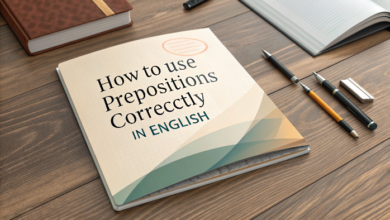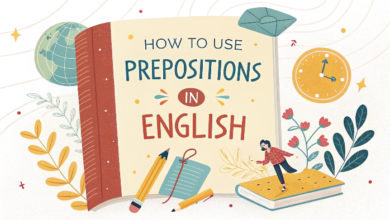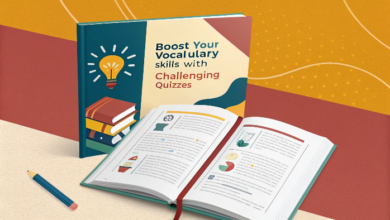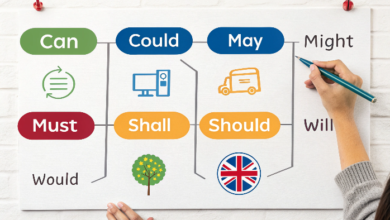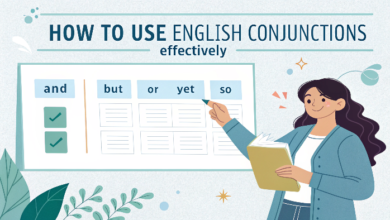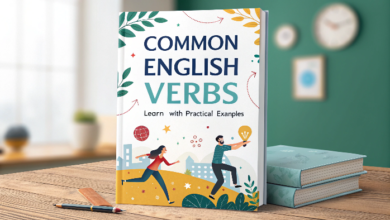A Guide to English Adjectives and Adverbs: Use Them Like a Pro
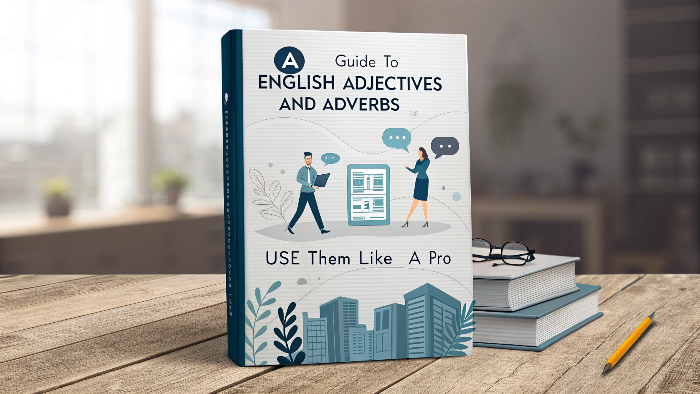
Examples of Adjective + -ly = Adverb
Slow → Slowly
Quick → Quickly
Happy → Happily
Beautiful → Beautifully
Exceptions
Some adjectives do not follow the regular rule and do not change when used as adverbs:
Good → Well (He plays well.)
Fast → Fast (She runs fast.)
Placement of Adjectives and Adverbs in Sentences
a. Adjectives
Adjectives usually come before the noun they modify (attributive adjectives).
Example: The red car is mine.
Adjectives can also come after a linking verb (predicate adjectives).
Example: The car is red.
b. Adverbs
Adverbs of manner usually come after the main verb or the object.
Example: She danced gracefully.
Adverbs of time are generally placed at the end of the sentence.
Example: He will visit tomorrow.
Adverbs of frequency are often placed before the main verb but after the verb “to be.”
Example: I always drink coffee in the morning.
Example: She is always happy.
Common Mistakes with Adjectives and Adverbs
Even advanced learners sometimes confuse adjectives and adverbs. Here are a few common mistakes:
Mistake 1: Using an adjective instead of an adverb
Incorrect: She runs quick.
Correct: She runs quickly.
Mistake 2: Using an adverb in place of an adjective.
Incorrect: She is well at playing tennis.
Correct: She is good at playing tennis.
A Guide to English Adjectives and Adverbs: Use Them Like a Pro
Practice Exercises
Exercise 1: Identify the Adjective and Adverb in Each Sentence
She sings beautifully on stage.
The red apple is on the table.
He worked hard to finish the project.
They live nearby.
She is extremely talented.
Answers:
Adverb: beautifully | Adjective: none
Adjective: red | Adverb: none
Adverb: hard | Adjective: none
Adverb: nearby | Adjective: none
Adverb: extremely | Adjective: talented
Exercise 2: Choose the Correct Option
She sings (beautiful / beautifully) on stage.
They are (quick / quickly) walking to the bus stop.
The meeting was (long / longly).
He is a (good / well) teacher.
She speaks English (fluent / fluently).
Answers:
beautifully
quickly
long
good
fluently
Key Takeaways
Adjectives describe or modify nouns and pronouns, providing more detail about them.
Adverbs describe or modify verbs, adjectives, and other adverbs, giving more information about how, when, where, or to what degree something happens.
Adjectives and adverbs can sometimes be confused, so it’s important to understand their functions and placements in sentences.
Adverbs are often formed by adding -ly to adjectives, although some words have irregular forms.
By practicing these concepts and exercises, you’ll be able to use adjectives and adverbs like a pro in no time!
See also:
Easy Grammar Quiz: Test Your English Skills
Boost your vocabulary skills with challenging quizzes

